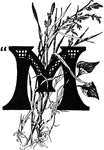
Sweet-scented Vernal Grass
Sweet-scented Vernal Grass (Anthoxanthum odoratum) has three-flowered spreading spikelets. The lateral…

Sweet-scented Vernal Grass
Sweet-scented Vernal Grass (Anthoxanthum odoratum) has three-flowered spreading spikelets. The lateral…
Tall Fescue Grass
Tall Fescue Grass (Festuca elatior) is found commonly in moist meadows. The panicle is contracted, erect,…
Tall Fescue Grass
Tall Fescue Grass (Festuca elatior) is found commonly in moist meadows. The panicle is contracted, erect,…

Tall Meadow Oat Grass
Tall Meadow Oat Grass (Arrhenatherum avenaceum), or Tall Oat Grass is the avena elatior of Linnaeus.…
Tall Meadow Oat Grass
Tall Meadow Oat Grass (Arrhenatherum avenaceum), or Tall Oat Grass is the avena elatior of Linnaeus.…
Timothy Grass
Timothy is commonly grown for cattle feed and, in particular, as hay for horses. It is relatively high…

Timothy Grass
Timothy (Phleum pratense), or Herd's Grass is commonly grown for cattle feed and, in particular, as…
Timothy Grass
Timothy Grass is commonly grown for cattle feed and, in particular, as hay for horses. It is relatively…
Timothy Grass
Timothy Grass is commonly grown for cattle feed and, in particular, as hay for horses. It is relatively…
Timothy Grass
Timothy Grass is commonly grown for cattle feed and, in particular, as hay for horses. It is relatively…
Two-rowed Barley
The Two-rowed Barley's spike, or ear, is long and somewhat compressed, and the grain is of a very good…
Virginia Cut Grass
Virginia Cut Grass (Leersia Virginica) is a small flowered white grass, and is smoother than white grass…

Virginia Cut Grass
Virginia Cut Grass (Leersia Virginica) is a small flowered white grass, and is smoother than white grass…
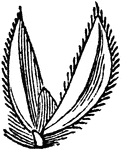
Virginia Cut Grass
Virginia Cut Grass (Leersia Virginica) is a small flowered white grass, and is smoother than white grass…
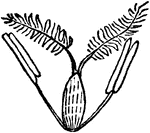
Virginia Cut Grass
Virginia Cut Grass (Leersia Virginica) is a small flowered white grass, and is smoother than white grass…
Virginia Cut Grass
Virginia Cut Grass (Leersia Virginica) is a small flowered white grass, and is smoother than white grass…

Virginia Cut Grass
Indian Rice Grass (Zizania aquatica), also known as Wild Rice, or Water Oats, is found in swampy borders…

Water Hair Grass
Water Hair Grass (Aira aquatica) is the sweetest of the British grasses. Its stems and leaves when green…

Water Spear Grass
Water Spear grass (Glyceria aquatica), also known as Reed Meadow grass, grows in wet soils and the shallow…
Water Spear Grass
Water Spear grass (Glyceria aquatica), also known as Reed Meadow grass, grows in wet soils and the shallow…
Wheat
Egyptian wheat (Sorghum bicolor) has long slender stalks growing seven to ten feet. It matures late…
Wheat
St. Peter's corn (Triticum monococcum) is a one-seeded wheat with a high portein content. This picture…
Wheat
Wheat (Triticum vulgare) is an annual herbaceous plant. The seed is oblong, or a compressed oval, surrounded…
Wheat
Wheat (Triticum vulgare) is an annual herbaceous plant. The seed is oblong, or a compressed oval, surrounded…
Wheat
Wheat (Triticum spelta) is an annual herbaceous plant. The seed is oblong, or a compressed oval, surrounded…
Wheat
Wheat (Triticum spelta) is an annual herbaceous plant. The seed is oblong, or a compressed oval, surrounded…
Wild Oat Grass
Wild Oat Grass (Danthonia spicata), also referred to as White Top grass, and Old Fog grass, is common…

Wild Oat Grass
Wild Oat Grass (Danthonia spicata), also referred to as White Top grass, and Old Fog grass, is common…

Wild Oat Grass
Wild Oat Grass (Danthonia spicata), also referred to as White Top grass, and Old Fog grass, is common…

Wild Oat Grass
Wild Oat Grass (Danthonia spicata), also referred to as White Top grass, and Old Fog grass, is common…
Wild Oat Grass
Wild Oat Grass (Danthonia spicata), also referred to as White Top grass, and Old Fog grass, is common…

Wood Hair Grass
Wood Hair grass (Aira flexuosa), also known as Common Hair grass, is a common grass found on dry and…
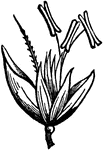
Wood Hair Grass
Wood Hair grass (Aira flexuosa), also known as Common Hair grass, is a common grass found on dry and…

Wood Meadow Grass
Wood Meadow Grass (Poa nemoralis) grows from eighteen inches to two feet high. It has a perennial, creeping…

Wood Meadow Grass
Wood Meadow Grass (Poa nemoralis) grows from eighteen inches to two feet high. It has a perennial, creeping…
Yellow Oat Grass
The Yellow Oat Grass (Avena flavescens) is a perennial grass siutable for dry meadows and pastures.…

Yellow Oat Grass
The Yellow Oat Grass (Avena flavescens) is a perennial grass siutable for dry meadows and pastures.…
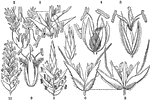
Grass Locusta
"1. Locusta of Corynephorus canescens (Grey Hair-grass); 2. paleae, &c. of the same; 3. locusta of Phalaris…

Grass napkin-ring
"A grass napkin-ring is another thing that can be made by weaving or braiding the grasses." -Beard,…
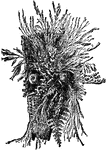
Wall Pocket
"The Wall-pocket Basket filled with grasses, ferns, and flowers, makes a very neat ornament to hang…
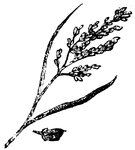
Rice
Rice is a food staple in more than 39 countries. There are many different varieties of rice. They vary…
Ryegrass Leaf with Sheath
Lolium perenne. A sheath, in botany is "the part of an expanded organ that is rolled around a stem or…
